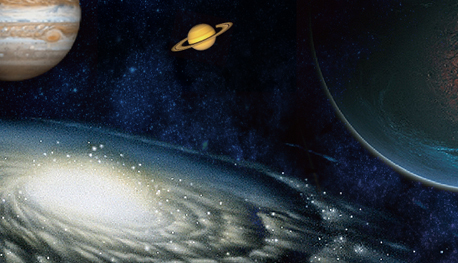Education
Earth and Planetary Sciences Undergraduate MajorCurriculum
Building a broad and foundational understanding of
earth and planetary sciences
Students who major in Earth and Planetary Sciences spend the first two years taking courses that are foundational to all fields of the discipline. Basic science courses are taught in the first year, and introductory courses in earth and planetary sciences, laboratory courses, mathematics, physics, and chemistry courses are taught in the second.
From the third year, students get to study a range of courses that provides a well-balanced education in more specialized subjects. There are also laboratory courses that help develop their practical skills.
Fields covered by this discipline are diverse and interrelated, making it possible for students to build a broad perspective whilst pursuing their interests in depth.
-
1st Year
- 100-Level Courses
-
First year courses in mathematics, physics, chemistry, and life sciences go beyond the level taught at high school and provide the foundation for specialized courses that follow in the second and third years. There are also introductory courses in earth and planetary sciences, given in the form of lectures, laboratory work, and field studies, which cover areas such as geophysics, earth materials, and astronomy.
The solid education offered in the first year enables students with no previous background in the discipline to progress to advanced studies with a firm footing.
There are also Earth and Planetary Science Seminars and stargazing events for students who seek further intellectual stimulus.
-
2nd Year
3rd Year- 200-Level and 300-Level Courses
-
Second- and third-year studies in the Earth and Planetary Sciences major may be viewed as being constructed from three disciplinary components that form a multi-dimensional framework. Advanced courses in mathematics, physics, and chemistry form the x axis; laboratory, field study, and numerical analysis courses form the y axis; and lecture courses related to the study of the earth, planets, universe, and life form the z axis. As students progress through their studies, it is expected they will discover their place in this framework.
-
- Mathematics, Physics, and Chemistry Courses
- Students study the three subjects essential to the discipline. Gravitational and electromagnetic fields in outer space are described as vector fields. Planetary formation is modeled using kinetics and differential equations over time. The earth's internal structure is expressed in terms of chemical reactions and thermodynamics.
-
- Earth and Planetary Sciences Courses
- These courses cover the basics of the three specialized areas with which the discipline of earth and planetary sciences is concerned. These areas are: research into the formation and evolution of planets of solar systems and extrasolar systems using theory and observation; research into the physical phenomena found in the earth and moon's interior and the surrounding space; and research that looks at the earth, planets, and meteorites as composites of matter. Courses in biological sciences are also provided.
-
- Laboratory Courses
- The Department of Earth and Planetary Sciences considers it important for students to study the natural world firsthand using a scientific approach. In these courses, students acquire skills that are essential for conducting experiments, observations, and field studies, as well as skills such as data analysis and numerical simulation.
-
-
4th Year
- 200-Level and 300-Level Courses
-
When students advance to their fourth year, they join a laboratory that matches their interests and begin their research. Depending on their research theme, this may involve conducting experiments, field studies, observations, theoretical work, numerical simulations, and data analysis. Seminars are held at laboratories where students have the opportunity to hold discussions with faculty and graduate-level students. Their individual research findings are then written up as a graduation thesis and presented at open presentations.
* The timeline depicts a standard case where students complete their bachelor's degree program in four years.
-
Entrance Examination
Students need to pass an entrance exam to advance from a bachelor's to master's program. To advance from a master's to a doctoral program, students must pass an advancement assessment.
-
Graduate Majors
Master's Program
Doctoral Program- 400-Level, 500-Level, and 600-Level Courses
-
Students who complete the Earth and Planetary Sciences Undergraduate Major may continue to study the same discipline in more depth at the graduate major level. They may also advance to a closely related interdisciplinary graduate major called Earth-Life Science.
-
- Department that offers this graduate major
-
- Earth and Planetary Sciences
-
- Departments that offer this graduate major
-
- Earth and Planetary Sciences/
- Chemical Science and Engineering/
- Life Science and Technology
-


